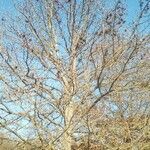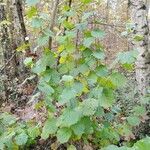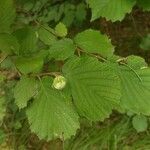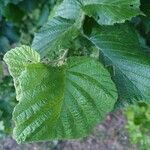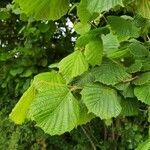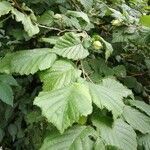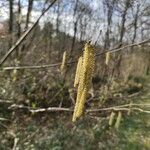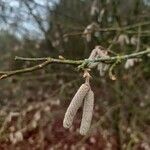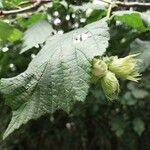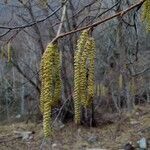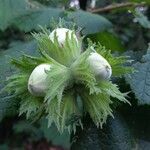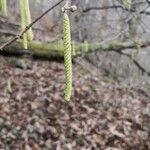A small deciduous tree up to 7 m high. It spreads to 3-5 m across. The stem is erect, with smooth, brown bark and hairy twigs. The trees sucker a lot, which produces a clumpy bush. The leaves are rounded, tapering to a point, with a heart shaped base. They are 10 cm long, and dull, dark green. The edges of the leaves have saw-like teeth. The leaves are hairy. Male and female flowers are separate, on the one tree. Male flowers are greenish-yellow stalks, like cat's tails. They are 8 cm long and hang downwards. The female flowers are very small, and in groups of four. The fruit are brown nuts 2 cm across. A green husk covers the nut, but then shrinks to allow the nut to darken and ripen. Plants within the Hazel nut group hybridise easily, giving rise to new kinds.
